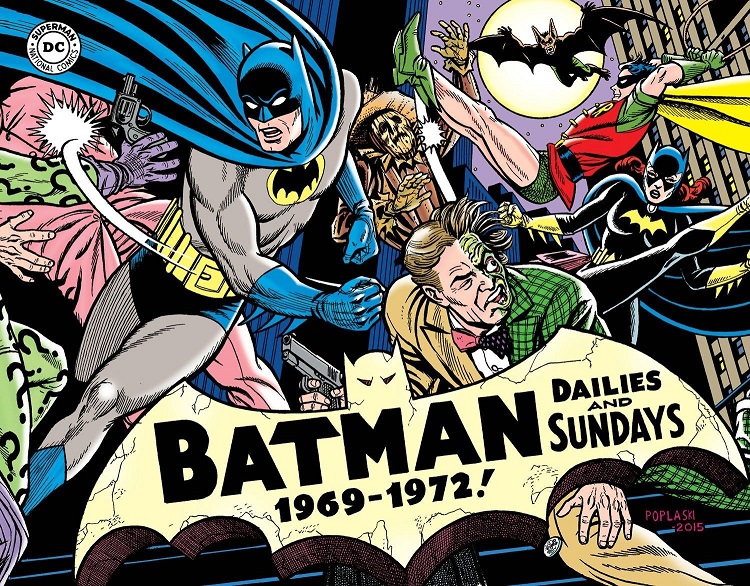
Long before most of us were reading the funny pages, Batman was finishing up a six-year comic strip run fueled by the popularity of his ‘60s TV show. While the early years found the strip mirroring the show’s campiness, the final era diverged into a tone similar to Batman’s more serious comic book stories. That’s the timeframe covered by this final entry in IDW’s Batman reprint editions, a collection that traces the decline of the strip from its fine artistry and full-week publishing schedule to hackneyed art and stories published six days a week by a radically reduced roster of newspapers. The series had drifted so far off its mark near the end that the syndicate unsuccessfully attempted to shift the focus a brand new hero named Galaxo in place of Batman. Due to the vast changes occurring during this run, the collection falls short as a consistently entertaining reading experience. However, as a documentary of a troubled strip struggling through its final gasps, it’s a fascinating train wreck.
The strips start off fairly well, thanks entirely to the expert artwork by Al Plastino. The writing is another matter. While readers might expect the strip to cycle through Batman’s most famous foes, it instead spends the entire first year of this run with no classic villain in site. Instead, Batman and Robin spend most of the year facing off against a socialite brother and sister with no super powers who want to cause Bruce Wayne’s financial downfall, mostly because Bruce declined the sister’s wedding proposal. Not exactly spellbinding stuff. I couldn’t help feeling like the writing needed a serious dose of Stan Lee to energize the stories, if only that had been a possibility back in the Silver Age.
While the quality of the artwork noticeably deteriorates over time, initially due to overworked Plastino’s employment of an assistant, the writing in this collection is most notable for two later stories. In the first, the character of Man-Bat is introduced to the strip just a few months after his debut in Detective Comics #400. His origin story stretches over many weeks of the strip’s run, and finally offers a subject worthy of Batman’s attention. In a following tale, Batman ends up with a broken back, threatening to permanently put him out of commission and introducing a plot device that would famously be used over 20 years later in Batman’s initial comic book encounter with Bane, as well as the Bane story’s retelling in The Dark Knight Rises film. It’s worth mentioning that the collection also features the first Silver Age appearance of the Harvey Dent Two-Face, beating out his 1971 comic book appearance by half a year.
As the series wound down and DC Comics stopped participating, it dropped newspapers and its syndicate employed an uncredited art team as it limped to the finish. The uncredited writer implausibly introduced the unwelcome character Galaxo as a third member of team Batman, before unceremoniously dumping Batman and Robin in favor of Galaxo’s nondescript friends Solaria and Paul in a hostile takeover that culminated in remaining papers including Stars & Stripes finally giving up on the strip. This period makes for amazing reading, not for the quality of the strips, but for the mind-blowing, massive implosion of the strip as a whole.